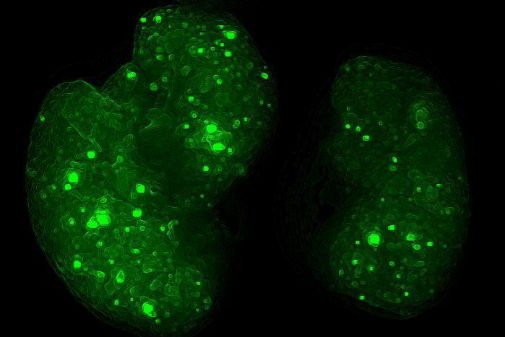Scientists at the Sloan Kettering Institute in New York , led by Spanish oncologist Joan Massagué , have discovered that the ability of cancers to metastasize depends on their ability to co-opt the natural wound repair pathways, which opens a path for their possible treatment
The scientific advance, published in the journal Nature Cancer and which has also been communicated by Sloan Kettering Cancer Center itself, provide a novel framework for thinking about metastasis and how to treat it.
First of all, remember that metastasis, which is the spread of cancer to other regions of the body, is responsible for 90% of cancer deaths . However, not much is known about what makes cancer cells capable of metastasizing.
Now, this study by researchers from the Sloan Kettering Institute concludes that metastasis-initiating cells employ a trick to spread: they co-opt the body's natural wound healing capabilities.
"Now we understand metastasis as the regeneration of the wrong tissue - the tumor - in the wrong place, the distant vital organs , " says Joan Massagué, director of the Sloan Kettering Institute and the director of research on an issue in which it has been 30 years doing research.
Previously there were indications that cancers could use wound healing pathways to support their growth. In the 1980s, researcher Harold Dvorak called tumors "wounds that do not heal . " But the new findings present the first detailed picture of how this process works at the level of cells and molecules.
Although metastasis is deadly, it is not something cancer cells can easily do. To spread, cancer cells must successfully separate from their neighbors, pass through the layers of tissue that separate them from the circulation, swim or crawl to a new location in the body through blood or lymph fluid, leave these vessels , then take root and start growing in the new location.
At each step of this process, most loose cancer cells die . Less than 1% of all cancer cells that shed from a tumor will eventually form measurable metastases.
"Once cancer cells learn to survive the stress of a strange environment, it is very difficult to get rid of them," says Karuna Ganesh, a medical scientist at the Molecular Pharmacology Program at SKI and one of the authors of the article. "They are a completely different entity from the tumor they started in . "
Ganesh and his colleagues wanted to understand what allows some cells to survive this stressful journey. They focused on a molecule called L1CAM , which previous studies by the Massagué laboratory had shown that it is necessary for numerous types of cancer cells to successfully metastasize in the organs.
Normal healthy tissues do not usually produce L1CAM, but advanced cancers do. What exactly triggers the L1CAM has so far been a mystery.
When observing human tumor tissues with a microscope, it was clear to researchers that dividing cells with L1CAM was more common in areas where an epithelial layer was broken, that is, injured. This led scientists to wonder if L1CAM is required for normal wound repair, as occurs in the intestine after colitis. Using a model of colitis in mice, they discovered that, in fact, this was the case .
In short, the concrete advance that metastases are not derived from genetic mutations but by a reprogramming of the cells that allow them to regenerate creating metastases.
According to the criteria of The Trust Project
Know more- Science and Health
- Cancer
Clinical management The Advocacy tombs the Health method to deny treatments to patients requesting the IVO
Clinical management Those rejected by appointment to have cancer in the IVO: «We will call you»
Health Increases myopia in children under eight years of age due to daily cell phone use

